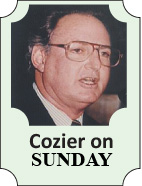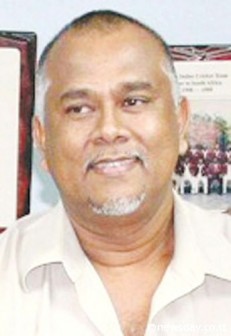 Not for the first time, the West Indies Cricket Board (WICB) finds itself alienating a large and significant segment of its public.
Not for the first time, the West Indies Cricket Board (WICB) finds itself alienating a large and significant segment of its public.
Its decision to suddenly switch the first round of next month’s T20 tournament from the Queen’s Park Oval in Port-of-Spain to the Sir Vivian Richards Grounds in Antigua has, not without reason, caused an indignant response in Trinidad and Tobago.
The Express newspaper noted in an editorial that the “manner in which Trinidad and Tobago lost out on the right to host the preliminary round…has left a bitter taste in many mouths, especially the Trinidad and Tobago Cricket Board (TTCB), the Queen’s Park Cricket Club (QPCC) and, most of all, the fans.”

The WICB, it fumed, “must be made aware that T&T and its passionate sporting public cannot be treated with such scant regard, one minute announcing this country as hosting the event and the next saying it is being moved to another island.”
Azim Bassarath, president of the TTCB, a constituent member of the WICB, and the QPCC said simply they were “extremely disappointed.” Respondents on various websites were far more extreme.
The issue boils down to the choice of the rental from Queen’s Park Oval, the largest, best appointed and one of the oldest of the international grounds in the West Indies, against the more favourable terms on offer for the several modern, state-owned and financed stadiums spawned by the 2007 World Cup.
In its media statement, Queen’s Park pointed out that, as a private members’ club, it maintains the venue using its own financial resources. So it has done through the years in hosting 57 Tests (more than any other in the Caribbean), numerous ODIs, a T20 international or three and countless regional and international matches since the turn of the 20th century.
It receives no financial assistance from its government, it noted, and “hence must charge a rental fee for the use of the facility.”
So the WICB did have an option but to have made it, as it did, after its original announcement revealed a certain unprofessionalism.
It is also open to question whether it studied the impact on the large fan base in Trinidad or the likely difference between receipts from Queen’s Park, home of the defending T20 champions where crowds of over 10,000 regularly turned out for the 2010 tournament there, and those from the Sir Vivian Richards Grounds, even with its costs met, according to Queen’s Park, by the government “out of public funds.”
Given the present economic climate, the question (and it applies to other such facilities), is for how long?
Queen’s Park initially put its rental at US$100,000 when the WICB reportedly sought to have the Oval for the week leading up to the January 9-14 playing days.
It said it started negotiations with the TTCB (acting on behalf of the WICB) on November 21 but, before they were concluded, it received a letter from the WICB proposing a rental fee “significantly less than that proposed by the TTCB.”
The TTCB had offered US$60,000 which Queen’s Park said it was “prepared to accept” but the subsequent WICB letter is said to have put its figure at US$40,000.
Without any further contact, the move to Antigua was made. The reasons, the WICB stated in a media release, were “high rental fees for the Queen’s Park Oval” and “unavailability of the Queen’s Park Oval on January 14.”
Queen’s Park claimed that, by a December 2 letter, the WICB put the rental figure at US$60,000 for six days of cricket and announced the change in venue.
The club said it insisted that it was still in negotiations with the TTCB at the time and, even before the WICB made its final announcement, had sought to clarify its position through “several phone calls and emails” without a response.
Concerning the clashing engagement, QPCC indicated that they never informed the WICB that the “venue was unavailable”, and added that they had told the WICB about their prior booking, which the board accepted.
All these revelations caused consternation in Trinidad, as they might also do elsewhere.
“There is no disputing that the regional body acted hastily, without even concluding the ongoing negotiations with the QPCC,” the Express asserted in its editorial. “This is yet another reason why the WICB is not highly regarded by most fans and is looked upon as the reason for the current decline in West Indies cricket.”
It seemed something of a non-sequitur but it did capture the mood in Trinidad.
Whichever West Indies Cricket Board (WICB) committee produced the schedule for the forthcoming regional season, it seems not to have thoroughly thought it through.
It places the final of the four-day tournament on the exact dates of the first Test against Australia, April 7-10, a clash that would reduce interest against the competition of live television coverage of the Test. As it is, the closing stages of the tournament coincide with the earlier ODIs and T20s, diminishing the strength of the teams that have to make do without their West Indies players.
In addition, the WICB stipulated that the final would be hosted by the team placed higher in the round-robin league, yet added that “no match will be simultaneously played in the same territory as an international match.”
Since the opening Test is scheduled for Kensington Oval, the WICB would find itself trying to untangle a very mangled web should Barbados qualify as the host team.
It is not too late to revisit the issue, even for the usually inflexible WICB, especially as it would require the cooperation of its nemesis, the West Indies Players Association (WIPA).
There are a couple of windows of opportunity to avoid the conflict between Test and final.
As it stands, the preceding T20 competition ends at Kensington on January 22, the four-day tournament starts February 3. A shift backwards of a week would accommodate a final March 30-April 2 (when the Australians’ match is a three-day warm-up), ensuring full-strength teams and providing a proper, competitive build-up for the Test, rather than the preparatory camp that has become the usual method.
Alternatively, the mid-tournament break of 10 days between the fourth and fifth rounds could be discarded.
It was introduced a couple of seasons back, apparently through an agreement between the WICB and WIPA to ease players from the pressure of too much concentrated cricket. As each team has a bye in any case, it seems an unnecessary disruption of the season.
Whatever the solution, to leave the showpiece of West Indies domestic cricket, the four-day final, compromised as it is at present would be unacceptable.




